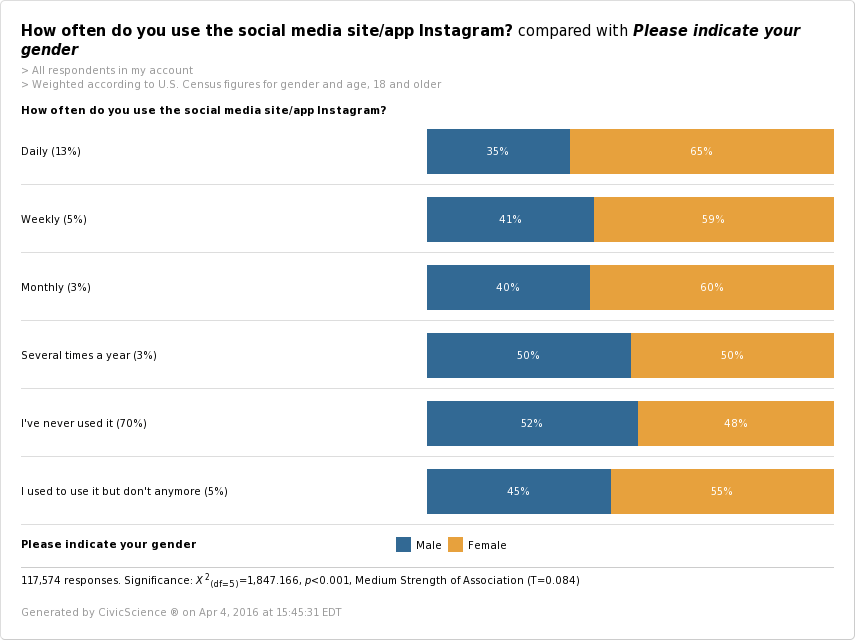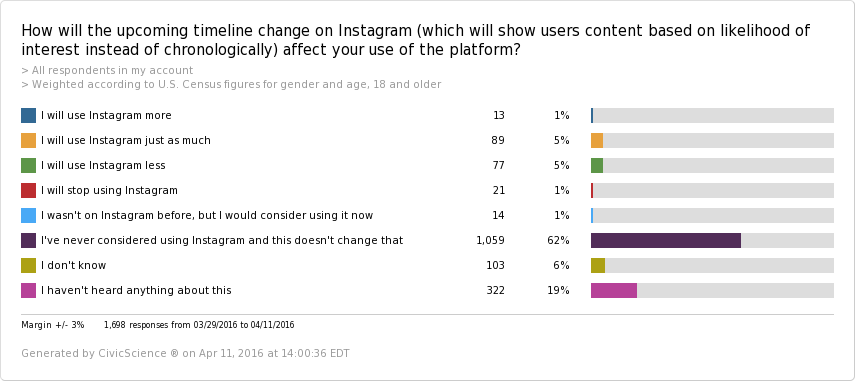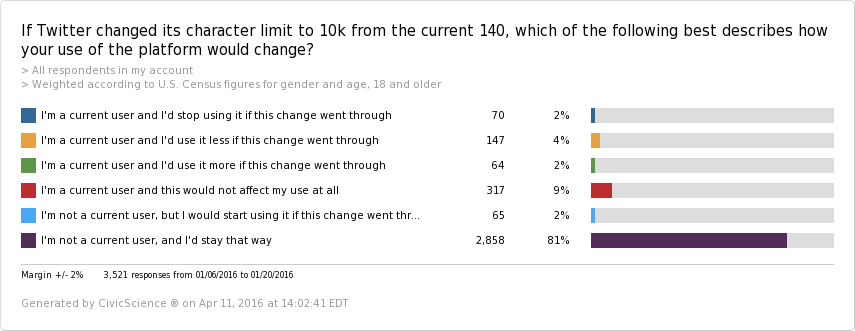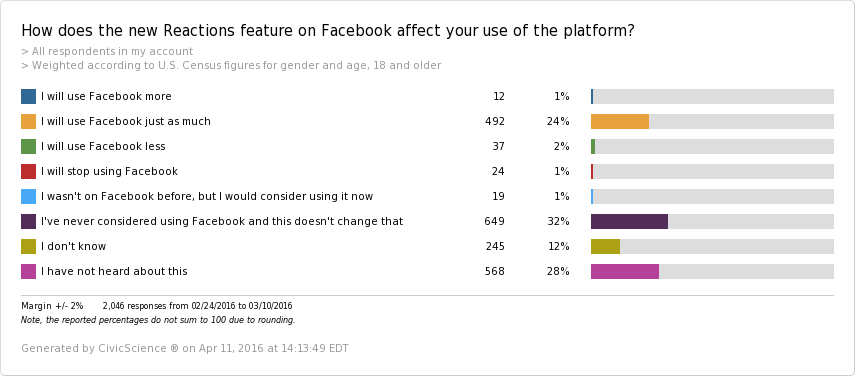How the impending Instagram Algorithm may change female use, and how brands need to stay on top of content.
Over the past few months I’ve tracked consumer reaction to changes in social media platforms. Here’s what I’ve learned:
Changes to Instagram are coming:
Understatement of the year: people have strong opinions and sometimes (ok, feels like always) share these opinions on social media. I see this time and time again before my eyes (I’m not talking about my old high school Facebook friends posting about the election cycle) but last week it was the many-dreaded (but some, all for!) personalized Instagram algorithm. If you didn’t catch this, the change will affect how users see content. Currently, content is seen chronologically, as it happens/is posted by the users you follow, newest at the top, older as you go on. The new change, which is only being tested on a smaller group of accounts right now, will show content based on relevancy of interest. It will be a personalized feed of sorts, the same idea as parent company Facebook’s feed. Makes enough sense, and many have seen this change coming, but there seemed to be quite a bit of opposition.
So, we asked the following question, which was answered by 1,674 people from March 29, 2016 to April 7, 2016 and weighted by U.S. census adults:

7% of respondents will use the platform just as much or more. Important, though: 6% of respondents said they would use it less, or stop using it altogether. Those answering I will use Instagram less are more likely to be women. They are also–you guessed it–young.
The answers above are grouped by favorability, but you can see the whole breakdown here:
Taking a look at our Instagram usage tracker question, which we collect ongoing:
65% percent of those who use Instagram on a daily basis are women (and 59% weekly!):

For an app like Instagram that is so specific and based sheerly on sharing images and videos, it may behoove the product team to think about making this change optional, like a switch in user settings. And women rule the roost when it comes to daily and weekly usage, so it’s something to consider in terms of how this change could deter their usage. Regardless, brands better get cracking on generating good content that is relevant and highly engaging, to feed the algorithm, so to speak. Specific to female driven brands, this will be a huge consideration if women begin to shift to other platforms- in order for brands’ social media teams to retain the female users who are still sticking around on Instagram, they need to ensure the content they share is about the consumer, not just highlighting sales or ways/discounts to buy. A customer-driven narrative is key. Also, word to the wise: don’t ask users to turn on notifications for new posts from your brand. Just create the content based on what’s worked before, and the algorithm itself should, in theory, work.
Twitter + NFL= the perfect match?
Moving right along to Twitter’s announcement this week that NFL has awarded the platform the right to stream NFL games for users. This is, more of a perk to using Twitter. We asked the below question from April 5th, 2016 to April 6, 2016 to 2,190 people and results were weighted by US Census adults. Here are the results grouped by Twitter users who would take advantage of this feature and those who would consider becoming Twitter users in order to take advantage of this (Favorable), and those who are Twitter users but will not take advantage of the offer(Negative). As well as the non users who would not join for this perk.

- 8% of respondents were favorable to this idea: they are either already on Twitter and would definitely take advantage of this, or would consider joining Twitter to check it out. 64% of the favorable respondents are men, 36% women.
- 13% said they are on Twitter but would not check it out- probably just not interested in football.
You’ll notice throughout this post that answer grouping is an easy way to see the favorable/non-favorable results grouped together, but here are the full details:
This is a good move to purely offer up a perk that a member of a platform would be interested in and hopefully to gain new members. This offer is definitely more of a nice to have add-on, rather than an extreme experience change, and the favorability percentage shows that.
What could be (but isn’t)
I saw something similar to the Instagram change reaction back in January when mention of long form Twitter posts (up to 10,000 characters to be exact) was even so much as whispered. Without an official release or promise of such a change, #Twitter10k was trending on Twitter. I remember when Twitter first got big, I thought 140 characters was too restrictive. ‘What will I say with that little room?’ I thought. But as time has passed, I realized that’s the whole point. And truly, as I see people who I consider really, really “good” at Twitter, it’s an art form, thinking of commentary in that little box. But then word got out that Twitter was exploring a not-so-limited box, the internet started ranting and said no to that idea.
The question,“If Twitter changed its character limit to 10k from the current 140, which of the following best describes how your use of the platform would change?” was answered by 3,521 people from January 6, 2016 to January 20, 2016. Let’s look at the results grouped by favorability:

I’m not a current user, and I’d stay that way is the most popular answer choice with 81% of the responses. Ok, got it. However: 6% of respondents say this change would affect their tweeting: they’d use it less or stop using it all together. These respondents are (like Instagram above) more likely to be women, and are more likely to live in the US South. What’s interesting is according to our results, a larger number of users (13% of respondents) have a favorable opinion on this change than negative and wouldn’t change their use if the change did go through, despite the peanut gallery of complaints on social media. So despite the slew of complaints, Tweeters gonna Tweet. (I know, I know.)
Full results:
What was the outcome of this? Twitter just announced in March they will not be moving forward with the whole 10k thing after their own research. So all’s well that ends well, I suppose? It goes to show that gauging an already evangelical user base could be a smart move for Twitter when thinking about new product enhancements. Or even propose other options: many users suggested ideas such as editing a post rather than more characters to tweet with.
Lastly…
What already is: reacting to Facebook posts beyond “Like”
Another perk launch: Facebook also recently launched a new feature: reactions; allowing users of the platform to react to posts, beyond just liking them, with emoji-like icons. I think this is a good example of taking already-there feedback from power users and putting it into action. Users have longed for something other than a like on people’s posts for a while now. Were reactions expected, though?
The question,”How does the new Reactions feature on Facebook affect your use of the platform?” was answered by 2,085 people from February 24, 2016 to March 10, 2016 and was weighted to U.S. census adults. Below are the topline results:

In terms of the active Facebook folks: 26% of respondents said they would use Facebook just as much or more, and they are more likely to be women. Only 3% percent of people had a negative opinion (use Facebook less or stop using it period).
Full results:
I think it goes to show that delighting users to engage with already-there content on the platform is pretty much a win-win. Again, a perk. There wasn’t an overall negative backlash like there sometimes is when things are announced as in-the-works or are too much of a change to the status quo.
But, in all honesty, how can social media companies keep their users 100% happy? There’s no solution. I’d say keeping big changes optional, when possible, doing their research, and gauging users’ take, too. Slowly integrating the changes never hurts, either. As for brands? Stay attuned to your audience, and focus your content on their needs and interests. The algorithms should actually work in your favor.












